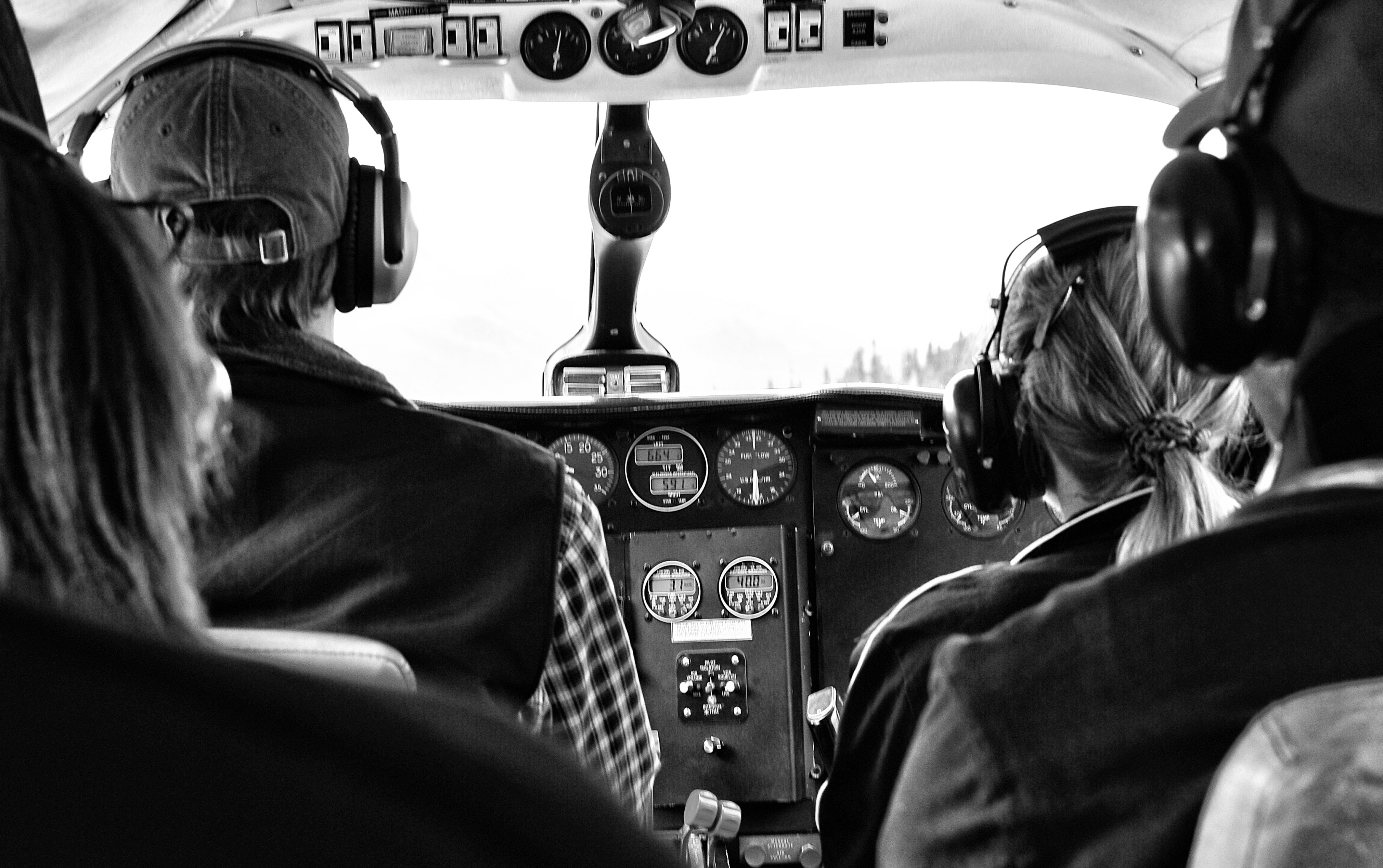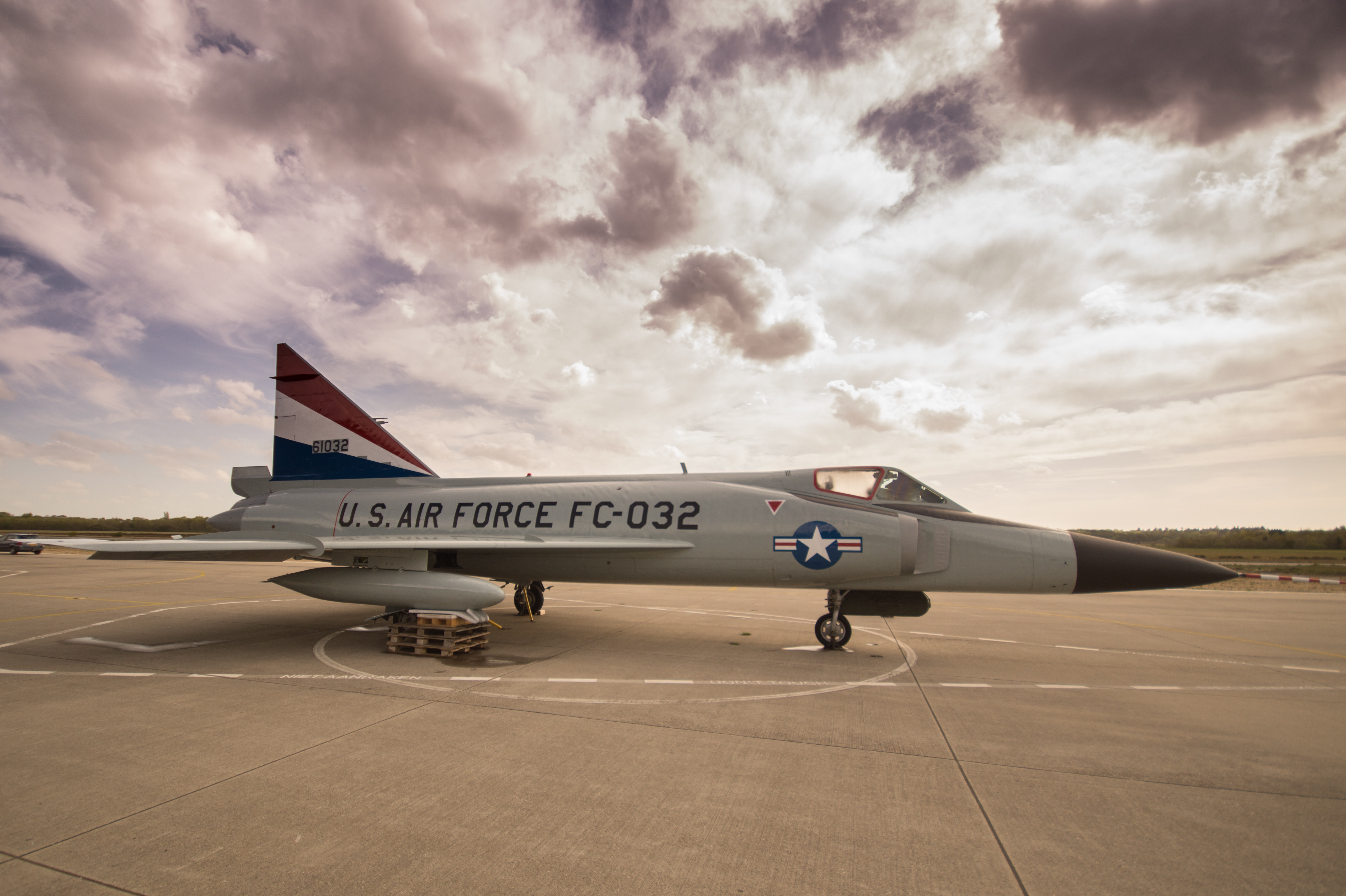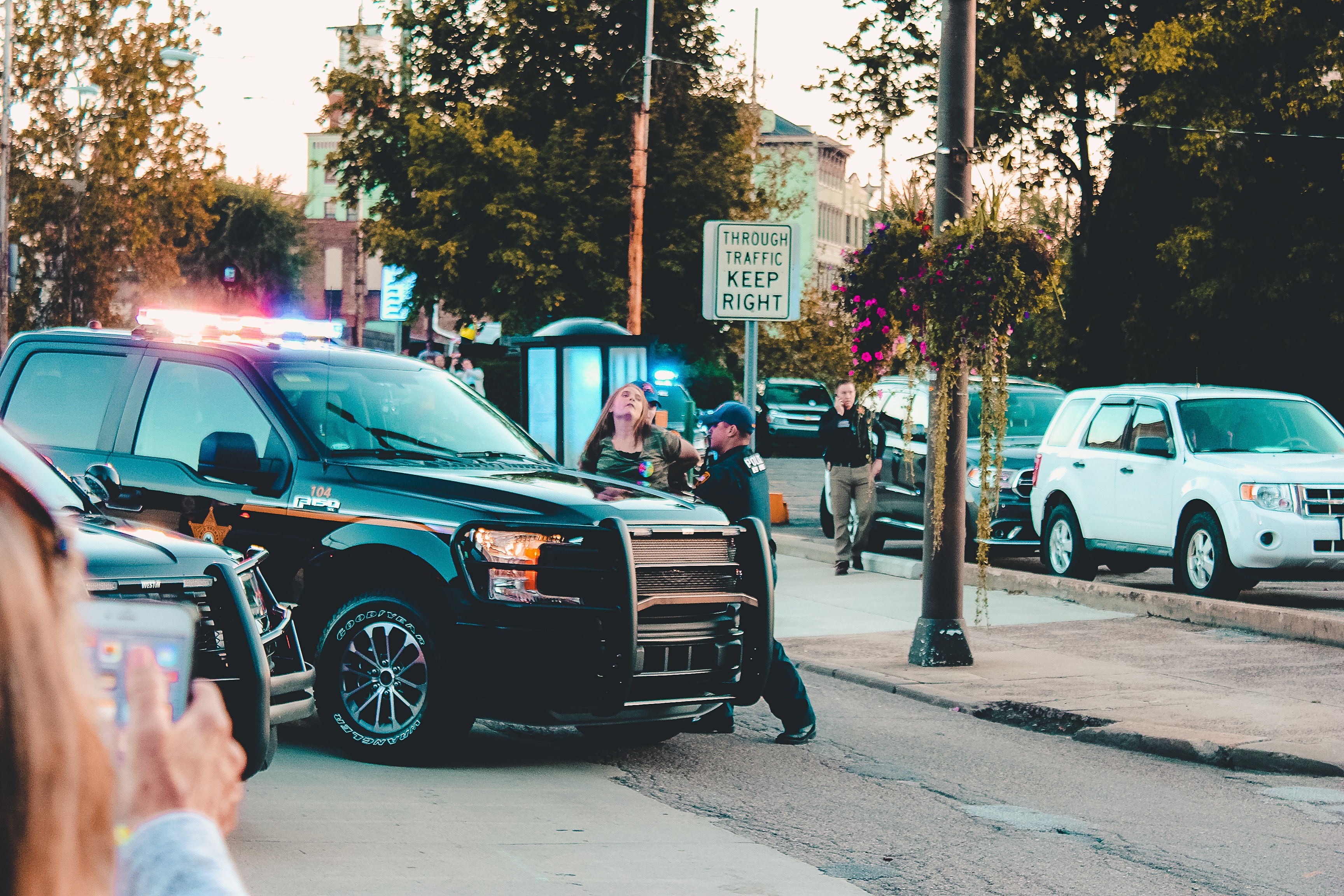 Listening to aircraft and airports with a scanner can be fascinating for both the aviation enthusiast and casual listener. For plane spotters scanners are an invaluable tool to determine what aircraft will be where.
Listening to aircraft and airports with a scanner can be fascinating for both the aviation enthusiast and casual listener. For plane spotters scanners are an invaluable tool to determine what aircraft will be where.
There are several types of monitoring and these can be broken down into several basic types:
- Airport traffic and ground control
- En route traffic control
- Air to Air
- Ground operations
These same 4 categories are used in both civilian and military aviation; they just use different frequencies. Military tends to be a lot heavier on the Air-to-Air traffic than civilian aviation but otherwise they are remarkably similar in structure.
Let’s start out at the local airport. There are several types of airports out there that can be pretty well categorized into 2 types: “Controlled” and “Uncontrolled”. Some Uncontrolled airfields have a ground station, some have no radio facilities at all. Most Controlled airports have separate Tower and Ground control channels and busier airports may have several of each.
Controlled Airports
Controlled Airports have a control tower that is open at least part of the day. One or more Controllers are in charge of the movements on and around the airport, the distance of the controlled airspace depends on the local conditions and area. Any aircraft operating to or from or in the vicinity of the airport has to communicate with the Tower controller.
Controlled Airports usually also have a Ground Controller; he controls movements on the ground of aircraft and vehicles on the airfield. Smaller controlled airports sometimes combine the Air Traffic Controller with the Ground Controller but larger or busier airports have separate controllers. Air Traffic Controllers operate on the “Tower” channel and ground controllers operate on the “Ground” channel. If only one person is operating then the controller will often talk on both the Ground and Tower channel at the same time.
Very busy airports, like O’Hare, Atlanta, Phoenix, L.A. etc. may have multiple Air and Ground controllers for different sections of the airport. In Phoenix for example there are Air and Ground Controllers for the north side and different controllers for the south side of the airport.
Each controller has his own frequency assigned just for him. At a small controlled airport there may be a single Tower channel and a single Ground channel. Busy airports may have 3 or more of each.
Controlled airports also usually have an “ATIS” channel. ATIS stands for Automatic Terminal Information Service. ATIS systems transmit continually on a recorded loop and includes such information as local weather conditions, what runways are in use, any special information the pilots might need (like obstructions in the area of the airport etc.) and other important information. These are great to listen to when you first arrive at the airport to watch planes but since it continually transmits you will want to lock it out pretty quickly. The recorded messages are usually a minute or so in length and plays over and over again. When condition changes they will update the ATIS message. ATIS messages are assigned a letter and the next letter up is used when they change the message. After “Z” it goes back to “A”.
Other channels seen at larger Controlled Airports include “Clearance Delivery” (channels used to provide and verify flight plan instructions), “Ground Metering” (channels used to stage aircraft before they are released to move towards the runway for takeoff) and special channels used to coordinate things like fuel trucks, de-icing operations and others. Very busy airports like O’Hare and Atlanta may have dedicated ground channels for gate areas separate from the regular Ground Control channels.
Less busy controlled airports may only operate their control tower for specific parts of the day, usually something like 6:00 AM to 10:00 PM. After hours the “Tower” channel is used as a CTAF channel like as done at uncontrolled airports.
CTAF Channels / Uncontrolled Airports
Common Traffic Advisory Frequency (CTAF) is used at airports without operating control towers. This includes controlled airports when the tower is closed and airports with no control tower at all. The CTAF could be the tower channel (at a controlled airport after hours) or some other frequency, usually a Unicom channel.
Uncontrolled airports have no control tower so all operations are handled by the pilots themselves according to rules and conventions. The CTAF is used to coordinate actions on and around the airport. Usually the pilots will broadcast their intentions on the CTAF channel so other pilots will be aware and can act accordingly. You will hear a pilot say in the blind something like “Cessna N12345 inbound Mayberry 2 miles out for Runway 21, entering right pattern”. This means the Cessna airplane with registration N12345 is 2 miles away from the airport in Mayberry and plans to land on Runway 21 and will enter the airport’s pattern to the right of the runway.
Other aircraft, vehicles on the ground and plane enthusiasts will be able then to look out for a Cessna coming in. If a plane is already doing something that might conflict with out Cessna then he will either hold back and let the Cessna do his thing or let the Cessna know to watch out or even alter his plan to accommodate him. If an airport maintenance vehicle is out working he will be able to tell if a plane is on the way in and keep clear of him or even tell him to watch for him.
Other channels on the Aircraft bands
There are many other types of channels you might come across on the aircraft bands. Some of these are listed below. Some of the descriptions and uses seem to merge or conflict but all in all the whole system seems to work pretty well.
Unicom
Unicom is often misunderstood and confused with other terms like MultiCom and CTAF. Unicom is a radio station that is used to coordinate activities but it is not staffed by a controller. An airport might have a Unicom station staffed by an airport employee or a business on the airport. There might not be someone monitoring the Unicom station at all. The Unicom channel is usually used to coordinate activities such as fuel and tie-downs, requesting ground transportation and other activities. At uncontrolled airports that have a Unicom channel assigned it is often used for pilot reports and coordination but this is more of a Multicom type operation being done on a Unicom channel.
Most controlled airports also have one or more Unicom channels assigned, often 122.950. Pilots can use the Unicom channel to contact service businesses to arrange for fuel, cars, passenger service, tie-downs and other needs.
Multicom
Multicom is similar to Unicom but there is no ground station involved. The only radios used are those in the aircraft and occasionally ground vehicles. Most air traffic operations at uncontrolled airports are actually a Multicom operation being done on a Unicom channel.
Air-to-Air channels
Air-to-Air channels con be fascinating to listen to. The most infamous is 123.450. This is often used for informal chit-chat amongst pilots. Here in the USA it is common to hear pilots exchanging pleasantries or complaining about the weather. Often a group of private aircraft travelling together might use it to coordinate flight speeds and directions.
Over the oceans, in particular the North Atlantic between the USA and UK, airliners are supposed to monitor 123.450 since they are often out of range of traffic control centers.
There are many other air-to-air channels assigned for specific uses, including Search & Rescue (SAR), Balloon operations, and training. In the Phoenix area where there are many large flight schools there are training areas with specific channels assigned to them in a similar fashion to a MultiCom/Unicom channel to coordinate activities there.
Emergency Channels
There are several channels specifically assigned for emergency use. 121.500 is the most well known. Often called “Guard” (since you are supposed to stand guard on the channel) it is the channel that one would switch to in emergencies or if no other channel exists for an important communication. 243.000 is the military equivalent.
121.500 used to be used also for ELT’s (Emergency Landing Transmitter), these are devices that transmit a specific set of beeps when a crash or hard landing is detected. Most of these have moved off to new channels but occasionally one may pop up here and there.
Ground Operations
Many airports have some sort of facilities for fuel, repairs, tie-down etc. These will often use the local Unicom channel to allow pilots to arrange these services. At controlled airports 122.950 is commonly assigned as a Unicom channel for these purposes. Some airports might have alternate Unicom channels for different FBO’s (Fixed Base Operators). Bill’s Aircraft Fuel Company may operate on one channel and Toms Flying Gas might operate on another.
Pilots can be heard calling an airport’s Unicom operator while en route to the airport to arrange a fuel truck, ride for the passengers, or to find out where they want him to park the aircraft.
At uncontrolled airports the CTAF channel is usually the same as the Unicom channel. Pilots can be heard giving position reports, coordinating operations, getting weather reports or saying hi to his buddy.
Controlled Airports usually have more ground operations and associated radio traffic. Besides the Ground controller (who controls all aircraft and vehicular movements from the gates to the runway) and Air Traffic Controller (who handles all the aircraft in the airport’s airspace as well as on the runways) there may be Gate Controllers, De-Icing operations, fuel trucks, and others operating on aviation channels. On regular Land Mobile (business and public safety) frequencies may be all kinds of operations like baggage smashers, porters, aircraft tugs, personnel transportation, security, police, fire and EMS and more. Even the newsstand in the terminal may use radios to allow the clerks to chat.
Ground Control is a fascinating system to listen to. The Ground Controller usually works in the control tower, often on the level above the air traffic controller. He is responsible for any movements on the airfield except on the runway. This includes aircraft and vehicles. The guy out cutting the grass next to the taxiway? He has to get permission from the ground controller to be there and be able to communicate by radio. Same with the guy changing the light bulbs alongside the runway and the fuel truck that has to get from one side of the airport to the other.
The Ground Controller works closely with the Air Traffic Controller so that one doesn’t have an aircraft crossing the other’s area. For example, if a plane needs to cross the active runway while taxiing from one place to another the Ground Controller will coordinate with the Air Traffic Controller to get permission to do that. When a plane has landed and leaves the runway the Air Traffic Controller will tell him to contact the ground controller in order to taxi over to the gate.
Small controlled airports might have a single controller working both Ground and Tower at the same time during slow periods. Large airports might have 3 or more Tower controllers and a like number of Ground controllers working different sections of the airport.
 En Route Air Traffic Control
En Route Air Traffic Control
The USA and Canada has several Air Route Traffic Control Centers (“Centers”) scattered about the continent. Each of these Centers are responsible for aircraft movements above a certain altitude for cross country traffic. Small planes that are flying VFR (Visual Flight Rules) under a specific altitude do not normally communicate with Centers but IFR (Instrument Flight Rules) flights and commercial traffic do.
“Centers” are responsible for tracking and controlling aircraft outside of airports and Terminal Areas. Each Center (there are over 20 in the USA) has a specific area to control and all aircraft above a certain elevation must be in contact with the Center. When an aircraft moves from one center to another he is “handed off” and assigned to a new channel. Each center has assigned channels and many remote base station transceivers to allow him to talk to any aircraft in his area, which might stretch for hundreds of miles. Each Center has many channels assigned to it. Center boundaries do not follow state lines, they are set up for the more efficient handling of traffic. Albuquerque Center for example covers most of Arizona and New Mexico as well as parts of Texas.
Operating in somewhat of a similar function as the Centers are TRACONS, or Terminal Control centers. TRACONS are responsible for aircraft going into or out of a major airport and handle it between the Control Tower and Center Controller. They also have specific frequencies assigned to them. They handle “Approach” (inbound to the airport) and “Departure” (leaving the airport) traffic.
An airplane travelling between Chicago O’Hare and Phoenix might start with the Gate controller at O’Hare International Airport, then talk to the Ground Controller there, then to O’Hare Tower. After takeoff he then gets sent to O’Hare Departure at the TRACON, who then hands him off to Chicago Center. Chicago Center hands him off to Kansas City Center, then they send him to Albuquerque Center who hands him off to Phoenix Approach. At a certain point he is then assigned to the Tower controller at the Phoenix Airport and after he lands switches to the Ground Controller there and perhaps finally to the Gate Controller. Each of these controllers have separate frequencies, so the pilot might be changing frequencies 10 or more times.
Larger aircraft usually have the ability to monitor 2 or more channels at the same time and pilots usually have the frequencies they need ahead of time so it is a lot more organized than it may seem.
Flight Service Stations
Flight Service Stations (FSS) provide weather and condition updates, including from other pilots and handle flight plans both on the radio and by other means (phone etc.). There used to be a system called Flight Watch on 122.000 nationwide but these have been combined with FSS services. If you hear a pilot talking to “Radio” then he is talking to an FSS station.
Air-to-Air traffic
Probably the most interesting thing to listen to for plane enthusiasts is Air-to-Air traffic. This is radio traffic from one aircraft to another. Some of this traffic is chit-chat among pilots and occasionally is more like CB radio than professional communications. 123.450 is a common frequency for this type of chit-chat. There are other channels (sanctioned and otherwise) used for Air-to-Air traffic.
In August each year, before, during and after the huge Oshkosh EAA fly-in there are often many groups of aircraft that fly together to the show. They will invariably find a channel to communicate to each other on.
Some more official communications include channels assigned to Search & Rescue (SAR), firefighting, helicopter coordination, and pilot training.
Most large cities have a local helicopter channel where choppers from local police, news and tourism can coordinate activities. At large events where there are several helicopters present they may arrange a rotation or specific elevations so everyone gets the shots they want safely. I have heard a few times where one helicopter will assume an informal control operation and coordinate entry, exit and rotation for the several news choppers covering a big incident. While competitors, these are professionals and they depend on each other to do their jobs safely. 123.025 is the helicopter channel in many metro areas.
SAR and firefighting operations often involve multiple aircraft. If there is a ground station controlling the activity (such as the Command Post) they communicate with them to arrange entry and exit to the affected area, water drops and where certain aircraft are going to operate. Without a ground control or command post they work these items out among themselves on an Air-to-Air frequency.
In certain areas pilot training boxes are designated and frequencies assigned. An instructor in one aircraft may communicate with the student pilot to perform maneuvers and critique them.
Arinc
Aeronautical Radio Inc., commonly referred to as Arinc, is a provider of various communications services for the airline industry all over the world. They provide communications services for airlines both en route and at airports.
Navigational Beacons
There is a huge network of navigational beacons around the continent called VOR’s (VHF Omnidirectional Range). There are about a thousand in the USA alone. They transmit continuous low-power signals on 108 thru 118 MHz. and provide pilots with bearing and distance. A pilot can set up on a beacon and use it to guide his aircraft. While this process is being taken over by GPS more and more there are still many VOR stations scattered around the country. The often look like big white traffic cones out in the middle of a field, in areas where suburban sprawl has occurred the VOR might be mounted on a large round platform 30-50 feet above the ground.
Some VOR’s transmit a Morse Code identifier and others transmit recorded or vice-generated weather information.
 Military Air operations
Military Air operations
While most civilian aircraft operate in the 118-138 MHz. band the military has a separate aviation band from 225 thru 380 MHz. Much of the traffic is pretty similar to its civilian counterparts. Many military air bases have control tower and ground channels and local support facilities, just like civilian airports. Centers and TRACONS have radios with military channels in them. Some civilian airports that host military units or receive military aircraft also have military channels for Tower and Ground operations. Most military bases also have civilian frequency assignments at them for the occasional civilian aircraft that may have to go there or fly in the area. Often the towers or controllers simulcast on both channels at the same time so that military users will know what other aircraft are doing and vice versa. Military tower controllers often talk to civilian aircraft in the area to coordinate flights and clear traffic thru Military Operating Areas or other restricted locales.
What really separates military aviation monitoring apart from civilian is the Air-to-Air traffic. The various branches of the military have Military Operating Areas (MOA’s) spread about the country and offshore waters. These MOA’s are used to practice maneuvers, dog-fighting tactics, formations and other activities. Out west in Arizona and California there are huge bombing ranges and areas for live-fire operations. All these activities operate on the MilAir band and provide fascinating listening. With a huge swath of spectrum (155 MHz.) to play with finding these operations is a hobby unto itself. Some dedicated MilAir listeners dedicate a dozen or more scanners to search out this huge range of channels looking for new activity.
MilAir operations often use a new frequency all the time, rotate thru a couple dozen channels or just grab random frequencies. The operations are often very short and varied so it is difficult to find sometimes, this adds to the fun! While military ground and air traffic control channels usually remain constant the air-to-air and range traffic varies considerably. Some very busy areas (like the Goldwater Range in Arizona) host aircraft from multiple bases and even several military branches and air forces from other nations. They may have established Entry and Exit frequencies to coordinate aircraft going to and from the range and assign routes.
Certain military aircraft will have both civil and military radios, these include units based at or operating at civilian airports or shared facilities. Most large transport and executive aircraft will have both UNH and VHF radios. Smaller military aircraft, especially fighters, may not have civilian radios so are limited to operations at bases and civilian facilities with military channels available.
Callsigns
Every aircraft and station uses some sort of callsign on the radio. Ground stations (Tower, Ground Control Center etc.) usually identify with the airport name or city (“O’Hare Tower”, “Phoenix Ground”, “L.A. Center”, “Cleveland Approach” etc.) while aircraft identify with a variety of methods. General Aviation aircraft usually identify with the registration number, usually with the full number (“Cessna N123AB”) on the first transmission to a new target and with an abbreviated call afterwards (“Cessna 3AB”). Aircraft with some sort of flight number identify with the airline or company name or call sign and flight number. The callsign does not always reflect the name of the company, it may be an historical name or derivative chosen for a multitude of reasons. The callsign “Cactus” for instance was used by US Airways before its merger with American. Cactus had been the callsign for America West and retained when they merged with US Airways. Callsign names may be found on the internet at various sources.
It isn’t just large airlines that use tactical callsigns. Task-specific flights often do too. Skydiving flights often use some sort of callsign like “Jump Ship” or “Skydive”. Medical flights often use “Mercy” to identify as such.
How do I find aviation frequencies?
The best place for aviation channels is the internet of course. There are dozens of sites dedicated to aviation monitoring and plane spotting.
The official data is available at the FCC’s website. You can download almost any information you want there, including airport charts, terminal procedures and more and it is all the official information. They even have charts for military facilities.
Another great resource is RadioReference.com. Between the database and the forums chances are someone has the information you want there. There are also Yahoo Lists, Facebook and other forums and mailing lists dedicated to various facets of aviation monitoring.
The civilian Aircraft band is basically between 108 MHz. and 138 MHz. 108-118 MHz. is mostly beacons and VOR’s along with AWOS stations, there is no two-way traffic there. Air Traffic Control and other two-way operations are on 118-138 MHz.
The Military Band is between 225 and 380 MHz. It used to stretch up to 406 MHz. but the 380-406 MHz. range has been reallocated mostly to other military uses like base operations. There is also some military aviation use of 138-144 MHz. and 148 to 150 MHz.
What scanner do I need?
This is the easy part! All current scanners these days handle the civilian aircraft band; no special upgrades are needed. Most newer scanners also work on the military bands as well. There are however scanners that are better for the Aviation enthusiast.
The BC125AT is ideal for aviation monitoring due to its small size and Service Search features. It is small enough to fit in your shirt pocket and has easy to use Service Searches for both the Civil aircraft band and the Military Aircraft band.
Consolidated Frequency List:
Here is a listing of some of the most common aviation frequencies in use. It is no means complete, be sure to check for local frequencies at www.radioreference.com and other sources.
- 108-118 Navigational Channels (VOR, Beacons and AWOS)
- 118-121 Air Traffic Control
- 121-122 Mostly ground control
- 122-128 Air Traffic Control
- 128-138 Company/AirInc use
Here are some interesting discrete frequencies used throughout the country:
- 121.500 Emergency “Guard” channel
- 122.000 Flight Watch
- 122.700 Unicom
- 122.725 Unicom
- 122.750 Air to Air
- 122.800 Unicom
- 122.850 Multicom
- 122.900 Multicom
- 122.925 Multicom
- 122.950 Unicom (Controlled Airports)
- 122.975 Unicom
- 123.000 Unicom
- 123.025 Helicopters
- 123.050 Unicom
- 123.075 Unicom
- 123.100 Search & Rescue (SAR)
- 123.450 Air to Air (chat)
- 243.000 Military Emergency/”Guard”
Please follow and like us:











